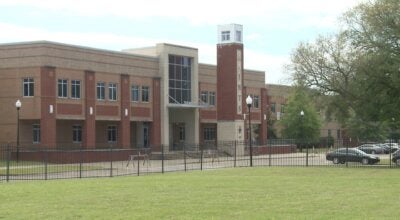Dallas County residents remember D-Day
Published 11:04 pm Friday, June 5, 2015
By James G. Smith
The Selma TImes-Journai
Perhaps the two most remembered dates from World War II are Dec. 7, 1941, and June 6, 1944. These two dates representing the Japanese surprise attack on our non-suspecting Navy in Pearl Harbor and the Allied landing on the beaches of Normandy respectively are vividly emblazoned in the memories of those old enough to have lived it.
Dec. 7, 1941, was the official beginning of the war for the United States and June 6, 1944, known as D-Day, code named Operation Overlord, precipitated the liberation of Europe from the grip of Nazi Germany.
The United States landed 23,250 on Utah Beach, 34,250 on Omaha Beach and dropped another 15,500 airborne troops in strategic areas for a total of 73,000 participating on D-Day. The British and Canadian forces totaled 83,115 (61,715 or them British) with 24,970 on Gold Beach, 21,400 on Juno Beach, and 28,845 on Sword Beach and another 7,900 airborne troops dropped to support the landings.
For years, we only had best estimates of fatalities on D-Day, but thanks to painstaking research by the US National D-Day Memorial Foundation now more accurate numbers are available.
The new research reflects a much higher number than the 2,500 original used. They have verified 2,499 American fatalities and another 1,914 from other allied forces for a total of 4,413 fatalities on D-Day alone. It was a horrific price to pay in human lives to secure a foothold on the Normandy coast line.
I ask some Selma residents for their recollection of D-Day. Jane McKenzie Moore was too young to remember the actual event, but remembers her father, the late William Elias McKenzie, writing to her mother, the late Josephine, about it.
The letter written on American Red Cross stationary dated June 6, 1944, didn’t specify what was happening, but did suggest it was something big. Mr. McKenzie serving in the Army Air Corps in England implored Josephine and daughters to “remember this date, we all will I guess.”
In one segment of the letter he stated: “The sky is black with planes, never stopping.“Then as if asking himself wrote, “Where did they all come from?”
World War II veteran Charles Cammack recalls it well as he was graduating Albert G. Parrish High School on that date.
He enlisted for Navy flight training in March 1944 and reported July 1,1944. Unfortunately, the entire class never made flight training due to the Navy having enough pilots.
After serving two years during and through the end of WWII, Charles was called back to duty in 1952 during the Korean War serving on an amphibious ship.
Charles told me his brother, the late Gillis Cammack, was in pilot training on D-Day. Later in 1944, Gillis flew a P-40 fighter plane in North Africa and Italy.
He transitioned to P-47s in France and continued with missions in Germany logging 95 combat missions. A remarkable record for a remarkable fighter pilot from Selma.
All of our WWII veterans deserve our admiration and utmost respect.



